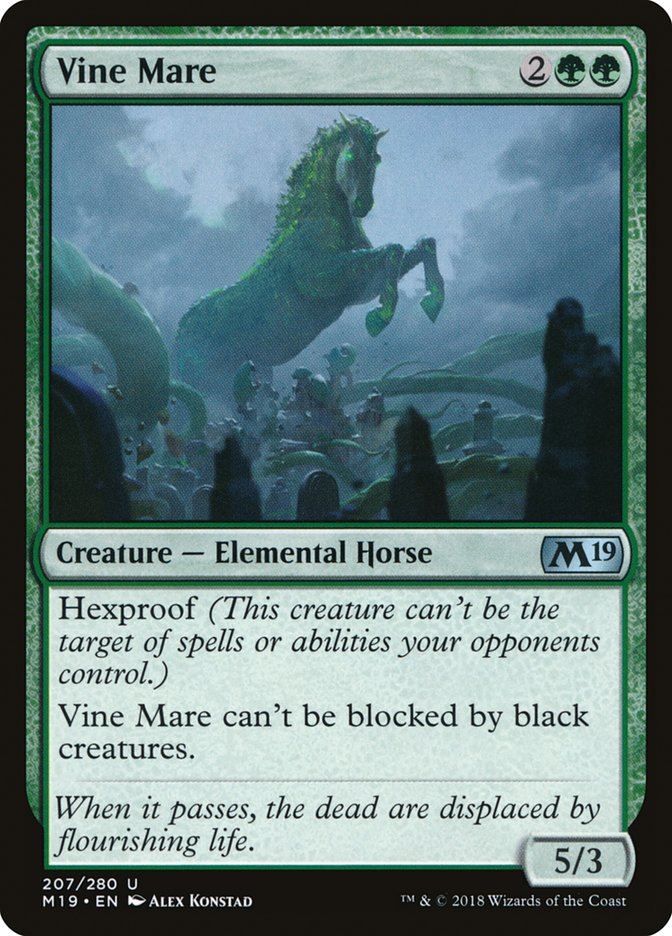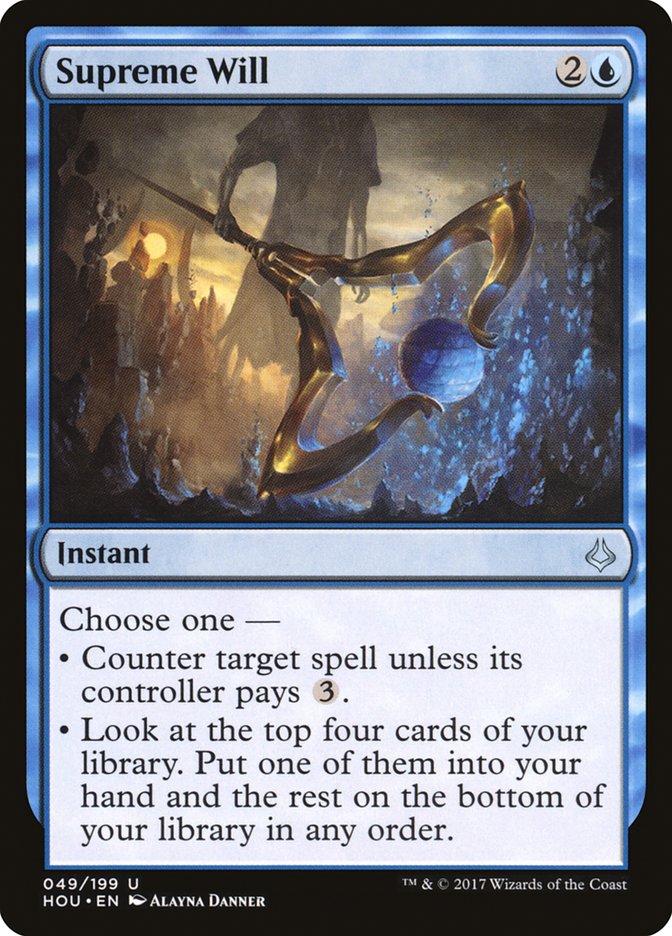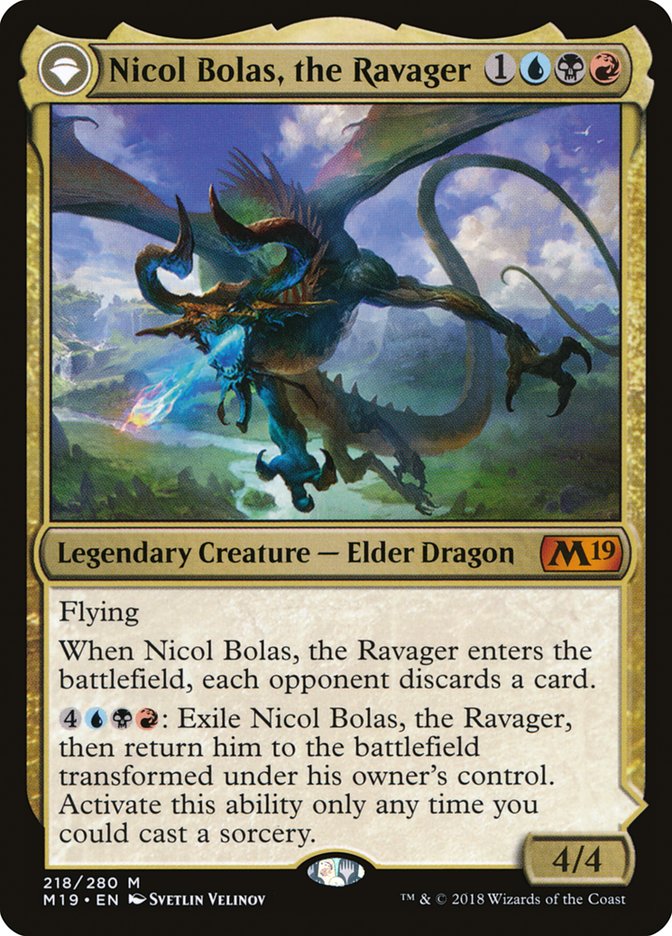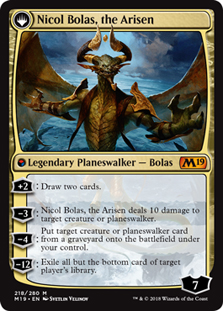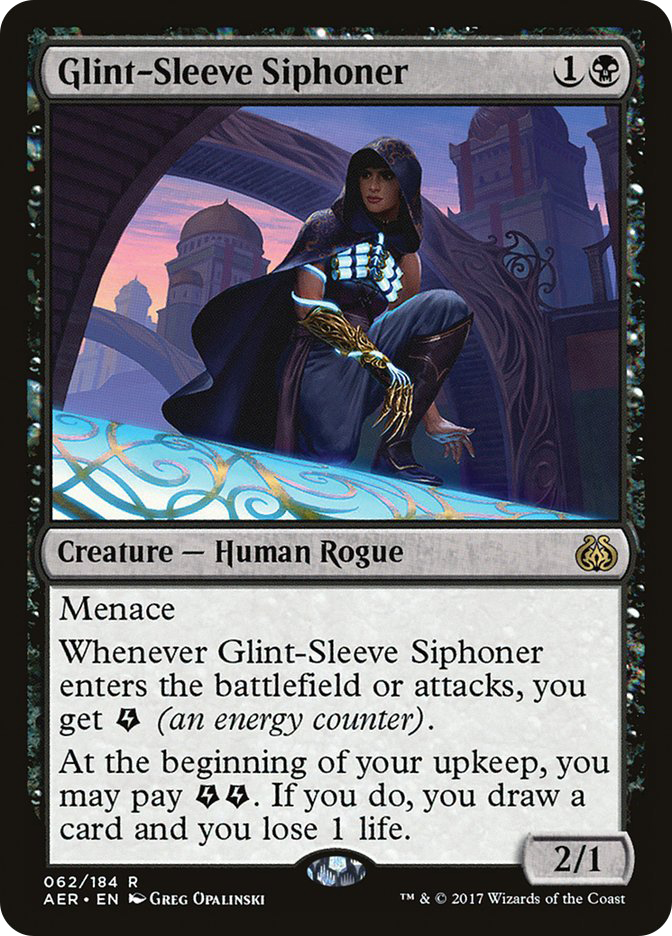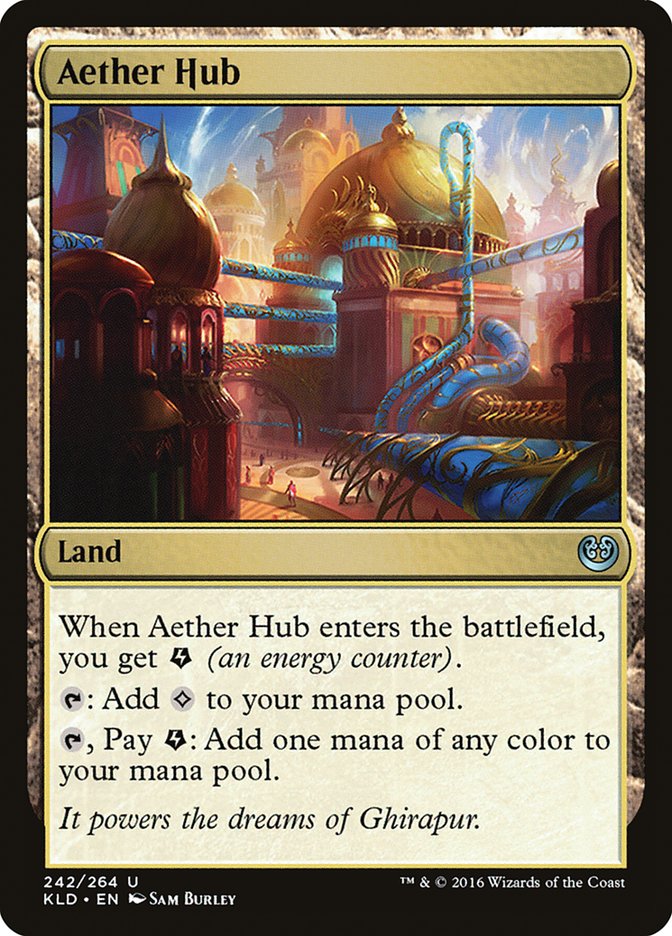Thanks to the #SCGTour
, we have ourselves the first tournament results after Core Set 2019 became legal. It used to take a couple weeks before
any concrete data would get dropped about Standard, but this past weekend’s
Team Constructed Open and Standard Classic are just enough for us to begin
the framework for what to expect out of Standard in the upcoming months.
Today I’m going to go over how I expect the metagame to shape up and
highlight decks that peaked my interests.
It would be disingenuous if we didn’t start the day off talking about R/B
Aggro as it was the deck of choice for both Standard players in the finals
of #SCGWOR. The ongoing joke that Owen Turtenwald’s team, The Pantheon,
perfected the archetype lives on as second place finisher,
Alex Friedrichsen
, played the exact list Owen used to Top 8 US Nationals, which was also the
same 75 he used to take third at Pro Tour Dominaria. One would
assume that this exact 75 is not what we should just accept as perfection,
continuing to play it week in and week out, but at the same time, that’s
not indisputable either.
What makes R/B Aggro so good is that it doesn’t get straight up beaten by
any reasonable choice. Even if you boil the metagame down to just the decks
that don’t get exploited by R/B Aggro there’s no great way to dominate the
deck. You can be slightly favored, sure, but claiming that you have a great
win percentage against the deck is just wrong. Maybe you do, but then that
would mean you’re going too far out of the way, causing you to lose
percentage against the other major decks in the metagame.
Again, we (along with many other writers) have already gone over why R/B
Aggro is such a good deck in other articles, so I don’t want to waste
precious time reiterating why the deck’s so good. Instead, it’s time to
find a metagame that doesn’t get savagely exploited by R/B Aggro. Well to
start things off we need to look no further than the winning deck from #SCGWOR‘s
Standard Classic.
Creatures (31)
- 4 Llanowar Elves
- 4 Scrapheap Scrounger
- 3 Greenbelt Rampager
- 3 Rhonas the Indomitable
- 3 Ghalta, Primal Hunger
- 2 Thrashing Brontodon
- 4 Steel Leaf Champion
- 4 Vine Mare
- 4 Thorn Lieutenant
Lands (11)
Spells (18)

This variation of Mono-Green Aggro is rather different than the version
Andrew Jessup
wrote about last week
, so it’s worth spending some time discussing what variation makes the most
sense. The biggest outlier for
Brandon Dempsey
‘s version is his affinity for hexproof Horses.
Vine Mare has quickly become a staple in Mono-Green Aggro, as it’s a
perfect threat against B/U and Grixis Midrange because it can’t really get
blocked or killed efficiently. Most players just put the Horse in the
sideboard as a stopgap measure, but Brandon just threw them all in his
maindeck! I believe this to be a metagame call more than the proficient way
to build the deck, as the cards he took out of the deck aren’t trivial.
Blossoming Defense, for example, is a card I’d fear trimming from the deck
as it’s one of the most important cards against R/B Aggro. The matchup is
usually a race, and protecting eventual attackers is important in the deck
that doesn’t have Glorybringer tempo swings.
Now that doesn’t mean I didn’t like everything Brandon was doing. One thing
in particular that I liked was his third copy of Hour of Glory and fourth
Ghalta, Primal Hunter in the sideboard. Hour of Glory is great right now as
there’s not many ways for Mono-Green Aggro to get past an opposing
Rekindling Phoenix, but also to take down a Ghalta, Primal Hunter in the
mirrors as the Dinosaur is by far the most important card in the matchup
outside of Rhonas the Indomitable. Knowing this, Brandon made sure to have
the best chance possible to win the late game in the mirror.
After evaluating all the lists of Mono-Green Aggro that came out this past
weekend, I’ve settled on this list as the one I’m introducing to my
gauntlet in preparation for #PT25.
Creatures (28)
- 4 Llanowar Elves
- 4 Scrapheap Scrounger
- 3 Greenbelt Rampager
- 3 Rhonas the Indomitable
- 3 Ghalta, Primal Hunger
- 3 Thrashing Brontodon
- 4 Steel Leaf Champion
- 4 Thorn Lieutenant
Lands (12)
Spells (20)

Mono-Green Aggro goes toe-to-toe with R/B Aggro, as it has some of the most
powerful starts in the format. Even on the draw, this deck can race R/B
Aggro with a timely Blossoming Defense or Hasheep Oasis. I personally don’t
know why Steel Leaf Champion has the ability to ignore small creatures, but
this is precisely why Mono-Green Aggro is capable of breaking serve in this
matchup.
The next deck is everyone’s favorite draw machine!
Planeswalkers (4)
Lands (11)
Spells (45)

This past weekend,
Dylan Donegan
and
Jonathan Rosum
both found themselves in the Top 8 of the Team Constructed Open piloting
almost identical U/W Control decks. Their lists were so similar that it
would be difficult to imagine that these two did not communicate before the
event, which is why I’m even more confused that they both registered a
Supreme Will.
I’m willing to be in the minority here, but I can no longer get behind
frivolously playing the modal spells in Standard. Supreme Will, Doomfall,
and even Commit in some instances have all felt worse and worse as Standard
adds sets to the format. I really liked these cards back when Standard only
had 5-6 sets, but at this point everything’s so efficient, leaving these
cards to get worse and worse.
It makes sense for a deck like B/U Midrange to play one Commit as the
strategy has no other way to remove an artifact or enchantment, but relying
on Doomfall in this deck is just silly. The same can be said about R/B
Aggro wanting some number of Doomfalls, as they’re just a bad version of
Duress that can randomly line up well enough to kill an opposing Lyra
Dawnbringer or The Scarab God.
The secret that some don’t seem grasp is that you only want to play these
cards when you’re less afraid of your opponent’s efficiency. Doomfall from
out of Grixis Midrange, for example, is not going to consistently kill a
Vine Mare out of Mono-Green Aggro, but it will more often than not kill The
Scarab God when cast from R/B Aggro. The same can be said about Supreme
Will when Temur Energy used it to fight cards like Settle the Wreckage out
of U/W Approach all those months ago. You need to use these cards for their
efficiency first and then enjoy the flexibility they provide later.
There are arguments as to why Supreme Will has merit in U/W Control, but I
don’t agree with them. The fact that control mirrors have a lot of draw-go
turns makes it extremely important to make every land drop, something
Supreme Will can provide. Using this reasoning does allow one to defend
playing Censor or Supreme Will over Syncopate as they obviously lose some
value as a control game lengthens. That said, Syncopating a Scrapheap
Scrounger can sometimes be the difference between winning and losing a
game.
It’s also arguable that Supreme Will is a nice card to have when playing
Torrential Gearhulk games after sideboard. I’ve personally enjoyed playing
Supreme Will in B/U Midrange many months ago as it was nice to increase my
instant density, but those days are long gone. Standard is much faster and
more efficient for me to buy into using Torrential Gearhulk
enters-the-battlefield ability on Impulse.
I’ve spent too much time on one card, but U/W Control is still a good deck
in Standard as it’s competitive against both R/B Aggro and Mono-Green
Aggro. There’s also less B/U Midrange and G/B Constrictor, two of the more
problematic matchups. Sadly, there’s not much to say about U/W Control that
hasn’t been said before. The best I can do is present the list I’m adding
to my gauntlet.
Planeswalkers (4)
Lands (12)
Spells (44)

Speaking of Grixis, what in tarnation is going on? It’s the newest deck in
Standard, so it will take some time for the masses to come to any universal
conclusions, but these decks are all over the place. Some players like
Gobern (The Magic Online PTQ Winner) simply splash Nicol Bolas, the Ravager
in a more normalized B/U Midrange shell while others like Todd Stevens go
all in on red cards.
Creatures (16)
- 2 Torrential Gearhulk
- 4 Glint-Sleeve Siphoner
- 2 The Scarab God
- 4 Champion of Wits
- 4 Nicol Bolas, the Ravager
Planeswalkers (2)
Lands (24)
Spells (18)

Creatures (10)
Planeswalkers (2)
Lands (26)
Spells (22)
- 3 Magma Spray
- 2 Glimmer of Genius
- 2 Fatal Push
- 1 Commit
- 4 Abrade
- 3 Doomfall
- 4 Vraska's Contempt
- 2 Search for Azcanta
- 1 Cast Down
Sideboard

I don’t actually know where to begin. I guess we should start with the
reason why red is being introduced into the deck in the first place, then
we can break it down even further as we go.
This card is making waves! So much so that almost no one is playing without
the card sticking to stock B/U Midrange anymore. After some initial testing
with Nicol Bolas, that makes sense to me. The card is absolutely bonkers
once it transforms into Nicol Bolas, the Arisen. Of course everyone’s going
to think this card is worth the sacrifice in consistency when they can
absolutely destroy their opponent with one of the most disgusting
planeswalkers of all time. I’ve probably flipped Nicol Bolas, the Ravager a
dozen times by now, and I still cannot tell you what its ultimate is.
That’s how good the other three abilities are. Honestly, I need to go check
if it even has a fourth ability.
Wow, that’s pointless
.
All this said I still don’t know if throwing Nicol Bolas into B/U Midrange
is the best way to play this card. I say this mostly due to playing with
the deck a lot in the past week and never really winning the game because I
cast/transformed Nicol Bolas. Most games eventually are won by it or The
Scarab God, but the shell of B/U Midrange is why I even get into a position
to win the game. Sure, activating Nicol Bolas, the Arisen makes short work
of any opponent, but it does give me the usual red flags that this card
could just be a win more, especially since many of the games I lose with
Grixis variants is when I’m having mana issues or the cards in my hand have
too high of a converted mana cost.
Before getting too far off the path, I do want to point out how interesting
it was for Todd Stevens to omit both Aether Hub and Glint-Sleeve Siphoner.
For as long as B/U Midrange has been a deck it’s been commonplace to see
these cards in every decklist. At first one would assume this is simply
wrong, or that last minute Todd Stevens accidently forgot to add the card
to his deck, but after further consideration, he just might be onto
something!
For starters, how good is Glint-Sleeve Siphoner anyway? Sure, you want to
draw extra cards, but that’s only relevant when the cards drawn have a
positive impact on the game. Both U/W Control and U/W God-Pharaoh’s Gift
don’t really care about extra creatures or removal spells drawn by their
midrange opponents. Only after sideboard do Glint-Sleeve Siphoner
activations become scary. In theory, the card would be good against
creature matchups, but in practice that’s not always the case. Goblin
Chainwhirler is a serious problem for one toughness creatures and
Mono-Green Aggro might punish a Grixis Midrange opponent for ignoring them
even on turn two of the game (well when they are on the play anyway).
All-in-all, Glint-Sleeve Siphoner may in fact just be an unjustified sacred
cow in these archetypes, and it took our very own Todd Stevens to blow the
lid off this common misconception.
Or he’s just Todd and loves doing random things for the sake of randomness!
I’m curious what you think about all of this. If you’ve been playing a ton
of Grixis decks I’d like for you to play some with just B/U Midrange again
and get back to me on your findings, especially if you’re playing the deck
on Magic Online. There’s a very good chance that Nicol Bolas, the Ravager
is just a good mirror match card and in fact bad against the rest of the
field, but we won’t know that unless more people give it a try.
This is the list of B/U Midrange I’d suggest starting with.
Creatures (14)
Planeswalkers (2)
Lands (23)
Spells (21)

Maybe B/U Midrange must play with Supreme Will, but I would only do so if
you expected high numbers of U/W God-Pharaoh’s Gift and U/W Control. Even
then, I don’t know if that’s enough to turn the tide in game one.
The third Field of Ruin and addition of Ravenous Chupacabra is in
concession to Mono-Green Aggro as I’ve had a difficult time competing
against that deck. Field of Ruin helps you use Fatal Push to kill Steel
Leaf Champion on turn three which is a great use of your mana compared to
letting them untap with it.
Again, I’m really interested in hearing from anyone who’s played Grixis
Midrange/Energy, as it’s a deck I’m having the most difficulty grasping. If
you agree/disagree with my statements, please let me know so we can
continue the conversation.
In the end, it’s difficult to imagine we’re going to see a major shift in
the metagame as R/B Aggro pushes to many decks out. I’ve even begun putting
in the hours playing the deck as I want to make sure I know it very well
just in case Genesis deems it the best choice for #PT25. I sure hope to
have something better by then, but I’ve made a commitment to myself and my
team that I will not trade in success for spice.
I want to win and R/B Aggro just might be the deck I have to use to do so.


